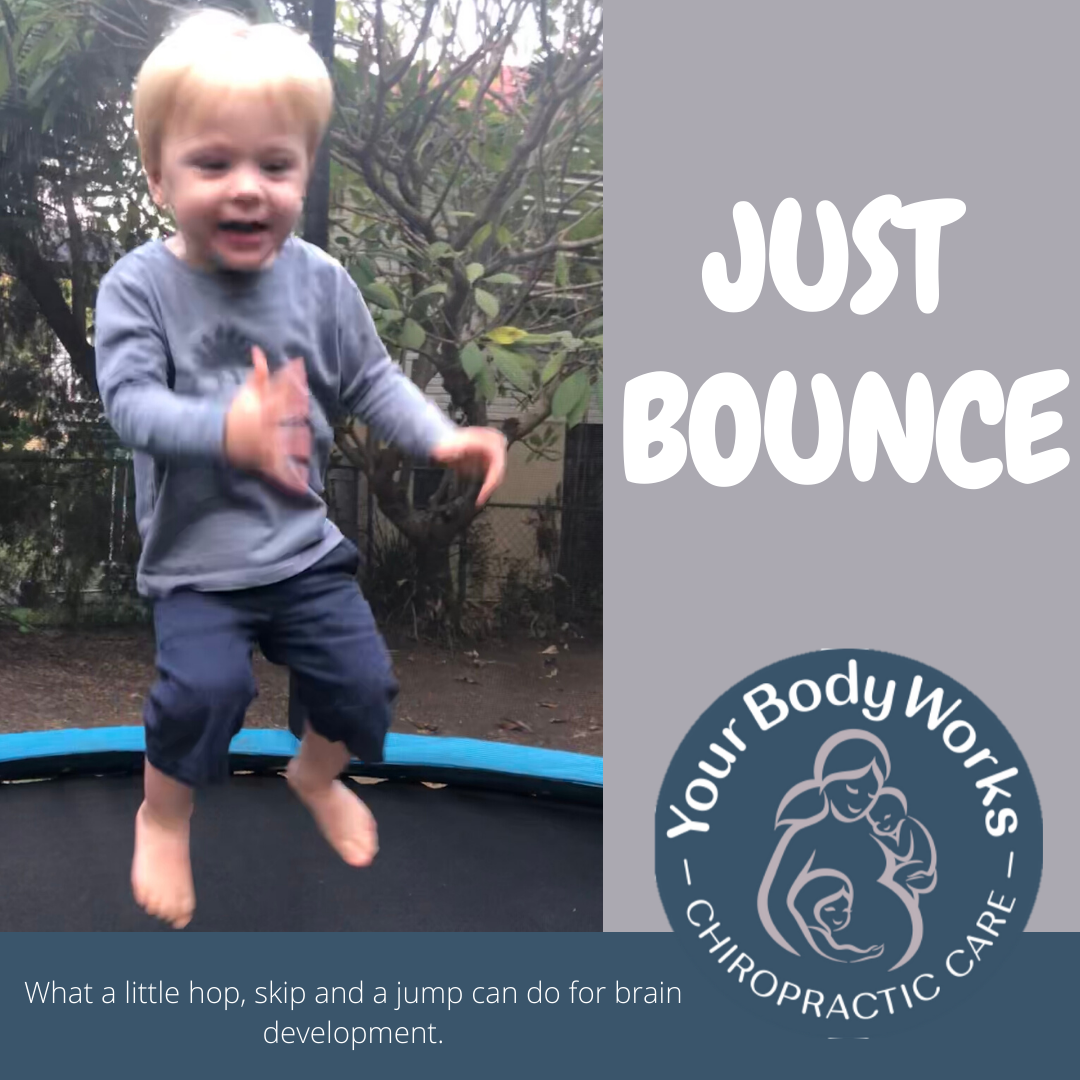What a little hop, skip and a jump can do for brain development.
With the recent shutdowns of all parks, and playgrounds and anywhere to take your toddler and children to burn energy; we were like most other parents fighting for remaining trampolines available for sale (along with any other physical exercise equipment that just vanished overnight). The trampoline was not simply purchased to burn energy, but to also provide essential stimulation for our 2-year-old toddler Hugo’s development. I must admit, it did concern me that he would be missing out on so much sensory & proprioceptive stimulation with limiting all climbing, jumping, swinging & exploring that happens in playgrounds. A trampoline and makeshift playground in our backyard fit the bill.
Since we bought the trampoline a couple of months ago, it has been the best fun! And not only for our toddler Hugo, but also for our big boys (12 & 10) and even for me! It took me back to feeling like a 6-year-old girl. So much fun!
So, I do get asked all the time as a chiropractor, are trampolines safe? Are they ok for kids to use? The answer is simple – the jumping and bouncing is not only safe, it is actually good for you! It is the crashes and falls that are the problem! The places like trampoline play centres, where a hundred kids are jumping, and crashing & running into each other, or the trampolines of the “old days” with no nets and exposed springs; these are just accidents just waiting to happen! Trampolines now are usually enclosed, many are spring-free or have protection of the springs, and are safe.
And yes, jumping is actually good for you!
Whilst jumping on a trampoline has all the typical benefits of exercise (better sleep, improved digestion, improved sugar metabolism, and immune function), it also helps with proprioception, balance and with learning.1
What is Proprioception? It is that sixth sense that tells your body where it is in space. As a chiropractor, I focus on stimulating proprioception with every adjustment I make. Heidi Havaak is doing amazing research into this field, supporting what we as chiropractors have known for decades.2 Proprioception is important for co-ordination, posture, body awareness & the ability to focus. It is the information from receptors in your eyes, ears (vestibular system in inner ear) and joints that travel to your brain to know where our body parts are, how they move and how much strength our muscles need to use. This awareness allows us to walk around objects in our way, find our way in the dark, to move a spoon to our mouth without looking at it and it helps us to brush our hair with just the right amount of pressure. Whilst it is extremely important in playing an instrument, handwriting, and playing sport; it is essential for everything we do, and is essential for our balance and co-ordination.3-6
Studies have shown relationships between proprioceptive tasks and manual dexterity, ball skills and balance.4 “Clumsiness is associated with an information processing dysfunction which is specific to the proprioceptive modality.”5 Kids (and adults) lacking appropriate proprioceptive input, tend to be clumsy and walk into things, have difficulty with focus & concentration, poor balance, or poor personal space awareness ie. Right in your face and unaware of the personal space bubble.
Jumping on a trampoline is a great way to stimulate that body awareness and balance and co-ordination. The cerebellum is the part of the brain responsible for making postural alterations in response to the information received from the body, in order to maintain balance. It responds quickly to the constant changes in your centre of gravity, that occurs with bouncing.
Jumping can also improve brain function as it allows an abundance of fresh oxygen to the brain, promoting mental clarity and focus. Research has shown movement helps with learning. A lot of trampoline brands are now printing games on the trampoline mat as counting, colours and shapes more readily learned with movement, and FUN.
Another added benefit is simply feel good fun. Jumping releases endorphins, those “feel good hormones” that enhance moods and make us feel great. It also gets kids outside, getting fresh air, and away from technology.
If you don’t have a trampoline, there are so many ways of increasing that proprioceptive input and balance, which is a blog for another day. Our blog on Fundamental Movement is a great place to start. There are also numerous ways of obtaining the benefits of exercise. The trampoline is one that combines both, and is low impact, so much gentler on the joints, and tons of fun. Get Jumping!
As a chiropractor, I see how everyday activities and simple proprioceptive exercises can enhance balance, co-ordination, learning and development.
As a mum, it’s so lovely to see our boys jumping together, playing together, learning together, and I love getting in on all the fun too!
Christine Lang
References
1. N.A.S.A., Journal of Applied Physiology 49(5): 881-887
2. Haavik H, Murphy B (2011), “Subclinical Neck Pain and the Effects of Cervical Manipulation on Elbow Joint Position Sense,” Journal Manipulative and Physiological Therapeutics, Vol. 34, Is. 2, 2011:88-97, DOI: https://doi.org/10.1016/j.jmpt.2010.12.009
3. ASRF., (2017) “The Six Senses and Chiropractic Part 1: Proprioception.” October 11.
4. Smyth M, Mason U (2008) “Use of proprioception in normal and clumsy children.” Development Medicine & Child Neurology. 12 November. https://doi.org/10.1111/j.1469-8749.1998.tb12327
5. T. Raymond Smyth & Denis J. Glencross (1986) “Information processing deficits in clumsy children”, Australian Journal of Psychology, 38:1, 13-22, DOI: 10.1080/00049538608256413
6. playgroupwa.com.au – Trampoline Benefits for Kids
7. asensorylife.com – Incredible Benefits of Boncing/Jumping/Rebounding

